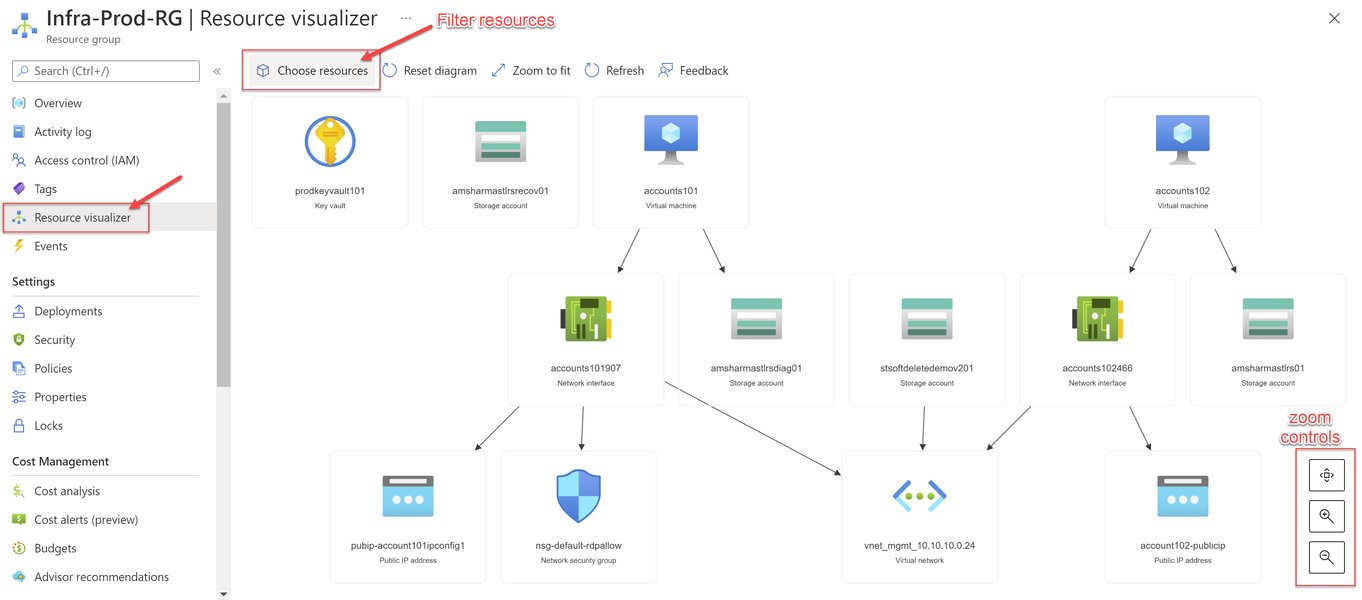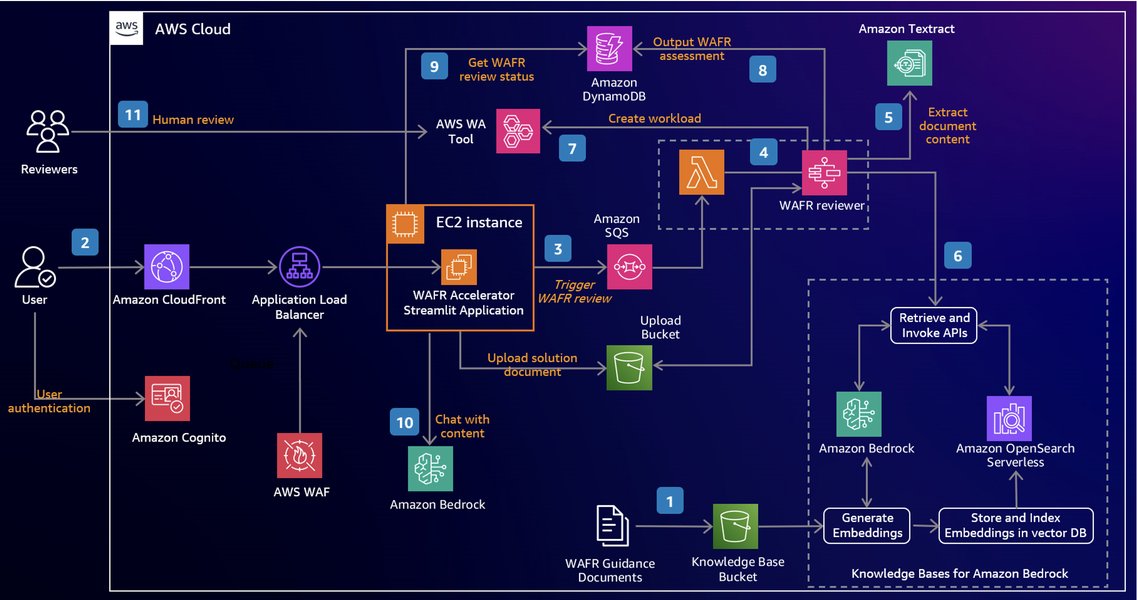
Unlock Cloud Potential: Your Guide to AI & Prompt-Based Architecture Tools on AWS & Azure
Discover how AI is revolutionizing cloud design with intelligent tools for AWS and Azure platforms.
The landscape of cloud architecture is rapidly evolving, driven by the power of Artificial Intelligence (AI) and Large Language Models (LLMs). Designing, deploying, and managing cloud infrastructure on platforms like Amazon Web Services (AWS) and Microsoft Azure is becoming increasingly sophisticated. To streamline these processes, both cloud providers and third-party developers offer a growing suite of tools that leverage AI, particularly prompt-based interfaces. These tools allow architects and developers to use natural language descriptions (prompts) to generate diagrams, configure services, optimize workflows, and even automate code generation, significantly accelerating development cycles and enhancing design accuracy.
Key Insights: AI in Cloud Architecture Tools
- Prompt-Driven Design: Many new tools allow users to describe desired architectures or components using natural language prompts, which AI then translates into diagrams, configurations, or code.
- Platform-Specific Ecosystems: Both AWS and Azure offer integrated suites (like SageMaker, Bedrock, Azure AI Studio, Prompt Flow) that provide foundational models, prompt engineering capabilities, and MLOps support tailored to their respective cloud environments.
- Automation & Optimization: AI tools extend beyond design, assisting with cost optimization, security analysis, code generation (like AWS CodeWhisperer), and workflow automation, making cloud management more efficient.
Azure: Harnessing AI for Intelligent Cloud Solutions
Microsoft Azure provides a robust ecosystem for building and managing AI-driven applications and architectures. Its tools emphasize integration, prompt engineering, and visual workflows to simplify the development lifecycle.
Core Azure AI & Prompting Services
Azure AI Studio & Machine Learning Prompt Flow
Azure AI Studio acts as a central hub for developing AI solutions. Within this, Azure Machine Learning Prompt Flow is a key feature designed specifically for streamlining the development, evaluation, and deployment of applications powered by LLMs. It offers a visual canvas where users can create 'flows' – executable instruction sets representing AI logic. This includes integrating various components like data sources, Python scripts, and pre-built AI models.
- Visual Flow Creation: Drag-and-drop interface for building complex AI workflows.
- Prompt Variant Testing: Enables experimentation with different prompts to optimize model responses.
- Evaluation & Deployment: Tools for assessing performance and deploying flows as real-time endpoints.
Prompt Tool within Prompt Flow
Embedded within the Prompt Flow interface, the Prompt tool allows users to define specific prompts, configure input parameters (like temperature or max tokens), and connect them to LLMs (e.g., models available via Azure OpenAI Service). This facilitates precise control over how the AI interacts within the larger flow, making it crucial for crafting effective prompt-based architectures.
Azure OpenAI Service
This service provides access to powerful OpenAI models like GPT-4 within the Azure environment. It's foundational for many prompt-based tools and applications on Azure. The service emphasizes responsible AI practices and enterprise-grade security. Architects leverage it for tasks ranging from code generation to natural language processing within their solutions. Azure provides guidance on prompt engineering techniques (e.g., few-shot learning, chain-of-thought) to maximize the effectiveness of these models.
Azure Architecture Design & Visualization
Azure Architecture Center
While not a prompt-based tool itself, the Azure Architecture Center provides essential design principles, best practices, reference architectures, and design patterns for building reliable, scalable, and secure AI and ML workloads on Azure. It serves as a critical knowledge base when designing architectures, whether manually or using AI-assisted tools.

Example of an automatically generated Azure architecture diagram using visualization tools.
AI-Powered Diagram Generators (Third-Party)
Tools like Eraser.io and potentially others integrated via APIs (e.g., using DocsBot AI prompts with ChatGPT or Azure OpenAI) allow users to generate Azure architecture diagrams directly from natural language prompts. Inputting a description like "Create a diagram for an Azure web app with SQL Database, App Service, and Application Gateway" can quickly produce a visual representation, accelerating the initial design and documentation phases.
AWS: Building Scalable AI Architectures
Amazon Web Services offers a comprehensive suite of services tailored for AI/ML development and generative AI applications. Its tools focus on flexibility, scalability, and providing access to a wide range of foundation models.
Core AWS AI & Prompting Services
Amazon Bedrock
Amazon Bedrock is a fully managed service that provides access to a variety of high-performing foundation models (FMs) from leading AI companies (like Anthropic, Cohere, Meta, Mistral AI, Stability AI, and Amazon itself) through a single API. It simplifies building and scaling generative AI applications. Bedrock allows users to experiment with prompts, privately customize models with their own data (using techniques like fine-tuning and Retrieval Augmented Generation - RAG), and create managed agents to execute tasks. Some sources mention capabilities like Bedrock Prompt Flows for orchestrating multi-step prompt sequences, potentially integrating with frameworks like LangChain.
Amazon SageMaker
SageMaker is AWS's flagship service for the end-to-end machine learning lifecycle. It provides tools to build, train, and deploy ML models at scale. While broadly focused on ML, it integrates generative AI capabilities:
- SageMaker JumpStart: Provides access to pre-trained models, including many popular open-source LLMs, which can be easily deployed.
- Managed Infrastructure: Simplifies the process of setting up and managing the underlying compute resources needed for training and inference.
- MLOps Integration: Offers tools and patterns for implementing Machine Learning Operations, enabling robust deployment and management pipelines.

Example architecture for leveraging Generative AI to accelerate AWS Well-Architected reviews.
AWS Architecture Design, Visualization & Automation
AI-Powered Diagram Generators (Third-Party & AWS Concepts)
Similar to Azure, tools like Eraser.io offer AI-driven generation of AWS architecture diagrams from text prompts. Additionally, concepts like building "AI Solutions Architect Agents" using Amazon Bedrock are emerging. These agents aim to assist architects by interpreting requests (potentially via prompts) to generate diagrams, suggest services, produce documentation, and even generate infrastructure-as-code templates.
Generative AI Application Builder on AWS
This is an AWS Solutions Implementation that provides a pre-built, serverless architecture pattern for quickly deploying generative AI applications. It often includes components for prompt management, interaction with models (like those accessed via Bedrock or SageMaker), and potentially basic UI elements, serving as an accelerator for developing prompt-based solutions on AWS.
AWS CodeWhisperer & CodeGuru
These tools use AI to assist developers directly within their IDEs. CodeWhisperer provides real-time code suggestions based on natural language comments and existing code, speeding up development. CodeGuru analyzes code for potential defects, security vulnerabilities, and performance optimizations, improving code quality. While not strictly architecture tools, they contribute to building robust AI applications designed within an AWS architecture.
AIHLD (AI-Powered High-Level Design)
Mentioned as a multi-cloud tool (including AWS and Azure), AIHLD aims to generate optimized cloud-native architectures from prompts. It can produce diagrams (like C4 models), estimate costs, and facilitate real-time collaboration, making it a potential asset for prompt-based high-level design across different cloud platforms.
Featured Video: AI Transforming Architecture Design
The following video demonstrates how generative AI on AWS, specifically using Amazon Bedrock, can interpret architectural diagrams (even simple drawings) and transform them into fully functional, deployed cloud solutions. This highlights the practical power of AI in automating complex architectural tasks.
This capability signifies a shift towards more intuitive and rapid development cycles, where high-level concepts described via prompts or visuals can be quickly realized as tangible cloud infrastructure.
Comparative Overview: AWS vs. Azure AI Architecture Tools
Choosing between AWS and Azure for AI and prompt-based architecture often depends on specific needs, existing infrastructure, and preferred models or workflows. Here's a comparative table highlighting some key tool categories:
| Feature Category | AWS Tools & Services | Azure Tools & Services |
|---|---|---|
| Core AI Platform | Amazon Bedrock (Managed FMs), Amazon SageMaker (End-to-end ML) | Azure OpenAI Service (OpenAI Models), Azure Machine Learning |
| Prompt Workflow & Orchestration | Amazon Bedrock Agents, potential Bedrock Prompt Flows, LangChain/LangGraph Integration, SageMaker features | Azure Machine Learning Prompt Flow, Azure AI Studio integration |
| Foundation Model Access | Broad access via Bedrock (Anthropic, Cohere, Meta, Mistral, Stability, Amazon), Open Source via SageMaker JumpStart | Primarily OpenAI models via Azure OpenAI, potential for other models via Azure ML |
| AI-Assisted Diagramming | Third-party tools (e.g., Eraser.io), Emerging concepts (AI Solutions Architect Agents) | Third-party tools (e.g., Eraser.io), Azure Resource Visualizer (auto-generation from existing resources) |
| AI Code Assistance | Amazon CodeWhisperer, Amazon CodeGuru | GitHub Copilot (Strong integration, owned by Microsoft) |
| Solution Accelerators | Generative AI Application Builder on AWS | Various solution templates and accelerators within Azure ecosystem |
Both platforms offer powerful capabilities, with AWS often highlighted for its broad model choice via Bedrock and extensive ML tooling via SageMaker, while Azure excels in its seamless integration with the Microsoft ecosystem and strong focus on OpenAI models via Azure OpenAI and structured workflows via Prompt Flow.
Platform Capabilities Radar: AI Architecture Tools
This radar chart offers a visual comparison of AWS and Azure based on subjective analysis of their strengths in different aspects of AI and prompt-based architecture tooling. Scores are relative assessments (scaled 3-10 for clarity) reflecting feature availability, maturity, and integration depth based on the synthesized information.
This visualization suggests AWS has strengths in model variety and MLOps, while Azure shows strength in dedicated prompt engineering tools (Prompt Flow) and integrated code assistance (via GitHub Copilot). Both platforms offer robust capabilities in other areas.
Mindmap: AI & Prompt-Based Cloud Architecture Tools
This mindmap provides a structured overview of the key tools and concepts discussed for both AWS and Azure in the realm of AI and prompt-based architectures.
Cloud Architecture Tools"] idA["AWS"] idA1["Core Platforms"] idA1a["Amazon Bedrock
(Managed FMs, Agents)"] idA1b["Amazon SageMaker
(ML Lifecycle, JumpStart)"] idA2["Prompting & Orchestration"] idA2a["Bedrock Agents / Flows"] idA2b["LangChain / LangGraph"] idA2c["SageMaker Features"] idA3["AI-Assisted Design"] idA3a["Third-Party Diagram Tools
(e.g., Eraser.io)"] idA3b["AI Solutions Architect Agents
(Concept/Bedrock-based)"] idA3c["Generative AI App Builder"] idA3d["AIHLD (Multi-cloud)"] idA4["Code & Optimization"] idA4a["CodeWhisperer"] idA4b["CodeGuru"] idB["Azure"] idB1["Core Platforms"] idB1a["Azure AI Studio"] idB1b["Azure Machine Learning"] idB1c["Azure OpenAI Service"] idB2["Prompting & Orchestration"] idB2a["Azure ML Prompt Flow"] idB2b["Prompt Tool"] idB2c["Prompt Engineering Guidance"] idB3["AI-Assisted Design"] idB3a["Third-Party Diagram Tools
(e.g., Eraser.io)"] idB3b["Azure Resource Visualizer"] idB3c["Azure Architecture Center
(Guidelines)"] idB3d["AIHLD (Multi-cloud)"] idB4["Code & Optimization"] idB4a["GitHub Copilot (Integration)"]
The mindmap categorizes tools into core platforms, prompting/orchestration, design assistance, and code/optimization aids for each cloud provider.
Frequently Asked Questions (FAQ)
What exactly are "prompt-based architecture tools"?
How do these AI tools help in designing cloud architectures?
Are these tools primarily from AWS/Azure or third parties?
Do I need deep AI expertise to use these tools?
Recommended Further Exploration
- How does Azure Prompt Flow compare to AWS Step Functions for AI orchestration?
- What are the best practices for prompt engineering when designing cloud architectures with AI tools?
- Can you show examples of using Amazon Bedrock Agents for automating AWS infrastructure tasks?
- How can AI tools assist in optimizing costs for existing AWS or Azure cloud architectures?
References
Last updated May 4, 2025